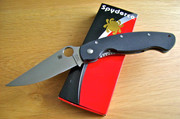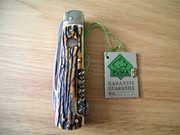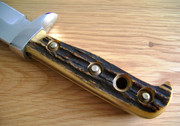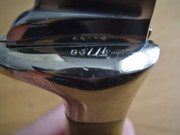Survive! Knives used to be a one man operation, run by Guy Seiferd in Gettysburg Pennsylvania USA, nowadays they seem to struggle to keep up with demand.
This is his model GSO 4.1, a sturdy allround fixed blade in M390 stainless & green canvas Micarta.









Specs:
Overall length: 22,7 cm
Blade length: 11,0 cm
Blade thickness: 4,0 mm
Steel: M390 stainless (third generation powdered metal, heat treated at Peter's Heat Treat)
Hardness: 60 HRC
Handle material: Green Canvas Micarta, contoured & blasted
Weight: 185 grams
For now without a sheath
This is his model GSO 4.1, a sturdy allround fixed blade in M390 stainless & green canvas Micarta.









Specs:
Overall length: 22,7 cm
Blade length: 11,0 cm
Blade thickness: 4,0 mm
Steel: M390 stainless (third generation powdered metal, heat treated at Peter's Heat Treat)
Hardness: 60 HRC
Handle material: Green Canvas Micarta, contoured & blasted
Weight: 185 grams
For now without a sheath


















































































































































































































